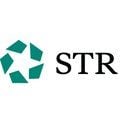Hotel Industry Leading Indicator weakens

The United States Hotel Industry Leading Indicator decreased 0.3% during August, after an increase of 0.9% the previous month, according to economic research firm e-forecasting.com in conjunction with STR.
The Hotel Industry Leading Indicator, or HIL, is a composite leading indicator that, on average, leads the U.S. hotel industry’s business activity four to five months in advance. The latest monthly change brought the index to a reading of 114.6. The index was set to equal 100 in 2000.
HIL’s six-month growth rate, a signal of turning points, went up by an annual rate of 5.4% during August after going up 7.4% in July. This compares to a long-term annual growth rate of 3.5%, which is the same as the annual growth rate of the country’s overall economic activity.
“We continue to see a slowdown in growth of the leading indicator, especially in the six-month growth rate, which is one of the best ways to detect turning points in business activity,” said Maria Simos, CEO of e-forecasting.com. “Unless there are some positive contributions to reverse this trend, we could see a slowdown for the U.S. hotel industry during the next few months.”
Four of the nine components that make up HIL had a positive contribution in August: Weekly Hours in Hotels; Hotel Profitability; Interest Rate Spread and New Orders for Manufactured Goods. Five of the nine components had a negative or zero contribution to Hotel Industry's Leading Indicator in August: Labor Market Tightness; International Visitors Future Demand; Oil Prices; Housing Activity and National Vacation Barometer.
The U.S. Hotel Industry Leading Indicator, or HIL for short, is a monthly leading indicator that provides useful information about the future direction of the U.S. hotel industry. Building off the tracking success of HIP, the real-time indicator for the U.S. hotel industry, HIL was built as a composite indicator that uses nine different components that, on average, when put together have led the industry four to five months in advance of a change in direction in the industry business cycle.